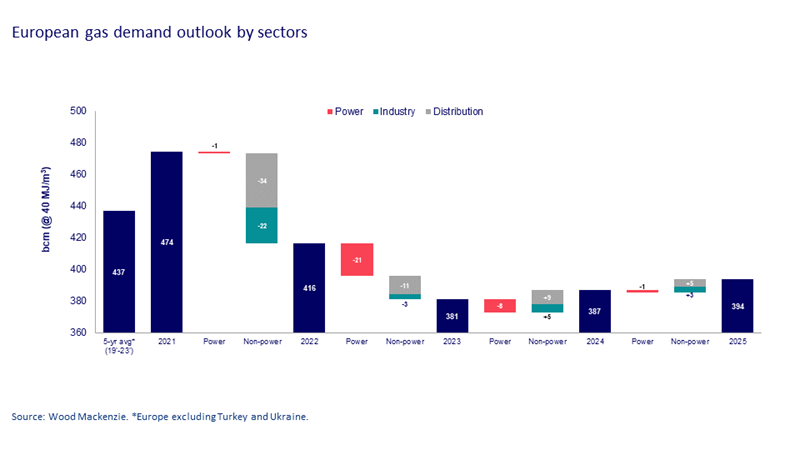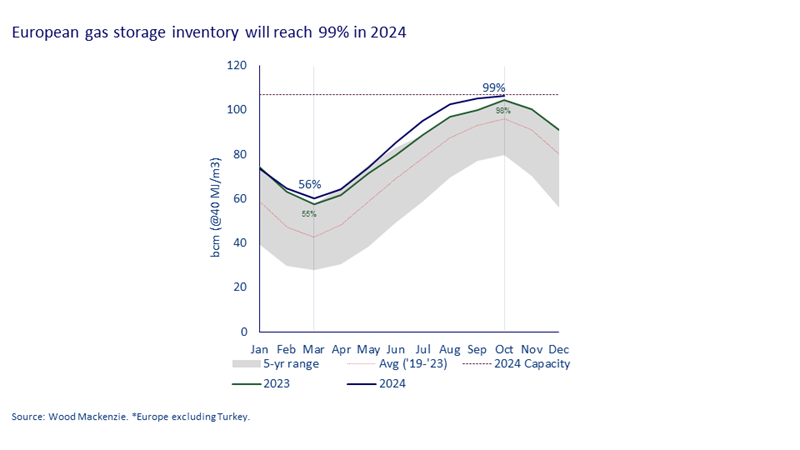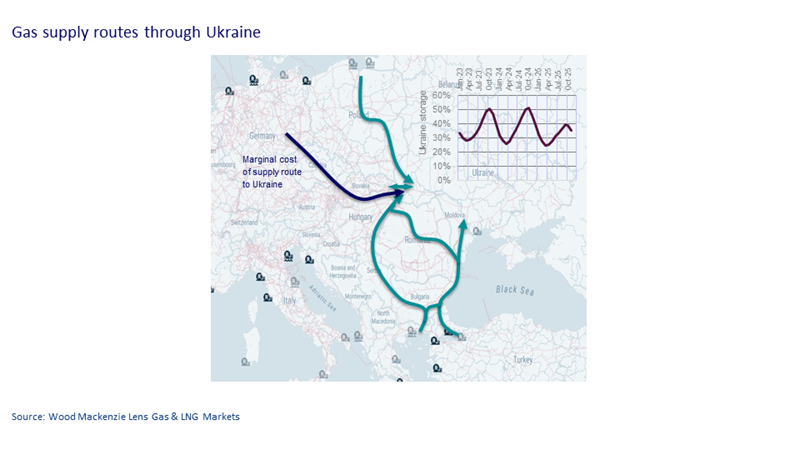Three key takeaways from our Europe gas markets short-term outlook Q1 2024
How will changes in supply and demand affect pricing dynamics for European gas in 2024 and beyond?
4 minute read
Mauro Chavez
Director - Americas Gas and LNG markets Consulting

Mauro Chavez
Director - Americas Gas and LNG markets Consulting
Mauro has more than 14 years of experience and is a recognised specialist in the natural gas and LNG industry.
Latest articles by Mauro
-
Opinion
Three key takeaways from our Europe gas markets short-term outlook Q1 2024
-
Opinion
Europe gas and LNG: 6 things to look for in 2024
-
Opinion
Three key takeaways from Europe Gas and Power Markets Short-Term Outlook Q3 2023
European gas prices are currently back to pre-crisis levels, but with a complex series of factors affecting future supply and demand, are they set to stay that way?
Our latest quarterly Europe gas markets short-term outlook takes a deep dive into European gas demand, supply and pricing in 2024 and beyond. Fill in the form to download an extract from the full report, or read on for three key takeaways.
1. Demand should recover slightly in 2024 under normal weather
Warm temperatures and low electricity demand meant European gas demand in 2023 was 16% lower than the five-year average from 2019 to 2023. The new year started more strongly, with colder weather contributing to stronger distribution demand in January, although a mild February saw it fall again. Industrial demand, which had started to recover in the second half of 2023, continued to trend higher, up 12% year-on-year in January and around 6% in February.
We expect a moderate rebound in industrial gas demand in 2024, underpinned by increased economic activity and a rebound in goods sales in the second half of the year. Low gas prices should drive higher gas consumption in refineries and ammonia production facilities. Assuming normal weather, households and services should also consume more gas in 2024.
Gas use in the power sector recovered 15% year-on-year in January 2024, thanks to below-average temperatures and low wind generation, but fell again in February, reducing 19% year-on year due to milder temperatures and strong wind generation. The ongoing phase-out of coal-powered electricity generation provides potential upside for gas. However, continued growth in wind and solar capacity, along with the recovered availability of nuclear generation, means gas demand in power is expected to reduce by 8 bcm this year.
2. High storage levels mean prices will need to fall in Q3 2024
The combined effect of two consecutive warm-winters, weak Asian LNG demand growth and structural gas demand destruction means Europe will start summer with gas storage levels above 56%. Our analysis shows that storage could be as high as 89% by the end of July. In fact, despite the rebound in industrial demand and lower imported supply of both piped gas and LNG, we see storage going on to reach full capacity by the end of October 2024 (see chart below).
High storage levels create downside risk to prices as the summer progresses. With storage levels close to full capacity, we estimate there will be up to 10 bcm of excess supply. Our view is that this will need to absorbed either through floating LNG or using available storage in Ukraine. This requires a summer-winter differential of more than US$ 2 per mmbtu.
We anticipate Title Transfer Facility (TTF) prices will have to come down to below US$7 per million British Thermal Units (mmbtu) in August and September to lock in the required difference between summer and winter prices – that’s almost US$1 per mmbtu lower than the current forward pricing curve.
Eventually, the deferred excess supply will also put downward pressure on November and December TTF prices compared to the current forward curve.
3. Russian flows via Ukraine will be key to market dynamics in 2025
Between 2024 and 2025 many new LNG projects will be commissioned. However, our view is that year-on-year LNG supply growth will be limited to 15 million metric tonne per annum (mmtpa) in 2025. This is because new projects will take time to ramp up to fully capacity, meanwhile, some legacy production will continue to decline, particularly in the Atlantic Basin. That, combined with recovery in Asian demand, means that LNG imports to Europe will only increase by 4.5 mmtpa.
What happens with Russian flows via Ukraine will be key for market dynamics in 2025. As things stand, the 12 billion cubic metres per year of Russian gas flows still coming into Europe via Ukraine will stop at the end of 2024, when the Ukraine transit agreement expires. Even assuming imports via the TurkStream 2 pipeline continue, Russia’s share of Europe’s gas supply mix to the EU will therefore plummet to just above 3% in 2025 – that compares to a record 35% prior to the war in Ukraine.
As a result, we expect European gas storage to be sitting at much lower levels than in previous years across 2025, resulting in European prices being higher in 2025 compared to this year.
However, if an agreement is found to transit some gas via Ukraine, more gas would be available. In that scenario, storage levels would again come close to full capacity and prices would be lower than both our base case view and the current forward curve.









